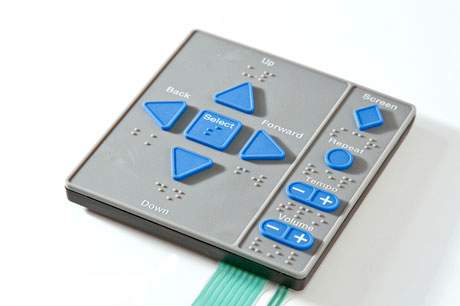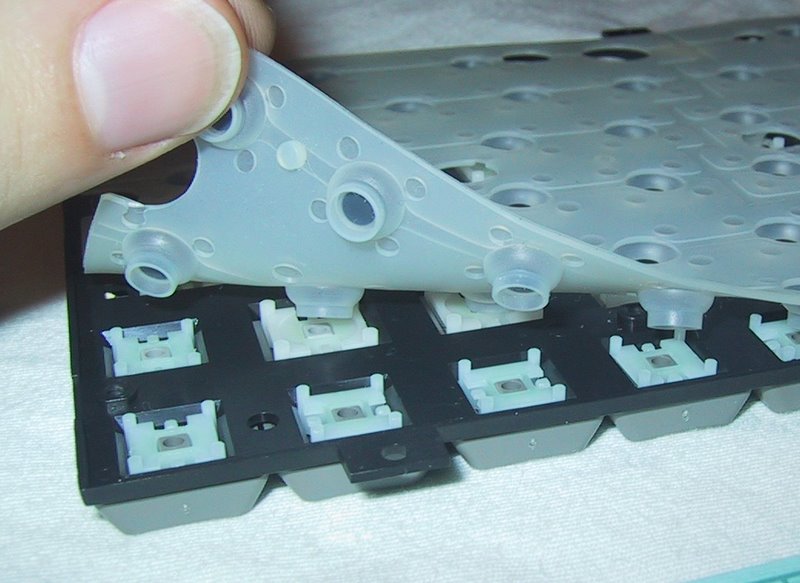Skilled Membrane Switch Manufacturer for Complex Projects
Skilled Membrane Switch Manufacturer for Complex Projects
Blog Article
Discovering the Production Refine of Membrane Switch for Numerous Industries
The production process of Membrane switches is a complex undertaking that requires precision and focus to information. From picking ideal products to carrying out rigorous top quality control procedures, each step plays a vital function in making sure functionality. Numerous markets, including automotive and clinical, count on these components for their special applications. Comprehending the details of this process reveals substantial insights right into exactly how these switches are created and their impact throughout diverse sectors.
Comprehending Membrane Switches Over: A Summary

Secret Materials Used in Membrane Switch Manufacturing
In Membrane switch manufacturing, the selection of vital products considerably influences performance and longevity. Conductive products, adhesives, and finishes play crucial functions, while substrate option affects total efficiency and dependability. Understanding these parts is crucial for enhancing the style and production of Membrane buttons.
Conductive Materials Overview
Conductive products play a crucial function in the functionality of Membrane switches, making certain reliable electrical links within the tool. Generally utilized materials consist of silver, copper, and carbon-based inks, each offering unique benefits. Silver is favored for its high conductivity and durability, making it suitable for applications requiring durable efficiency. Copper, while slightly much less conductive than silver, is an economical alternative commonly used in printed circuits. Carbon-based inks give a versatile choice, ideal for applications where versatility and reduced prices are prioritized, although they have reduced conductivity contrasted to metal options. The choice of conductive products directly affects the overall integrity, lifespan, and performance of the Membrane button, making it a vital consideration in the production procedure.
Adhesives and Coatings
Adhesives and finishings are important elements in the production of Membrane buttons, providing important bonding and protective buildings. These products guarantee that various layers of the switch, consisting of visuals overlays and wiring, adhere safely to each other, enhancing resilience and performance. Typically utilized adhesives include pressure-sensitive adhesives (PSAs) and epoxy-based formulas, which provide strong adhesion and resilience. Coatings, such as polyurethane or acrylic, offer to shield versus ecological aspects, consisting of dampness, abrasion, and chemicals. Furthermore, finishes can improve tactile feedback and aesthetic charm, adding to the overall user experience. The option of ideal adhesives and finishes is important for enhancing performance and long life in varied applications across various sectors, ensuring that Membrane changes meet specific functional demands.
Substratum Option Variables
Substratum choice plays a crucial duty in the production of Membrane switches, as it significantly influences their total efficiency and toughness. Secret products such as polyester, polycarbonate, and flexible published circuit boards (FPCBs) are generally used for their distinctive residential or commercial properties. Polyester is favored for its cost-effectiveness and resistance to abrasion, making it appropriate for applications with high wear. Polycarbonate offers premium quality and impact resistance, suitable for environments calling for high visibility. FPCBs supply enhanced versatility and are usually made use of in complex layouts. The choice of substrate additionally affects elements like thermal security, chemical resistance, and convenience of printing. Eventually, choosing the ideal substrate is important for guaranteeing the performance and durability of Membrane switches over across different industries.
The Design Refine of Membrane Switches
The design procedure of Membrane buttons is a vital phase that considerably affects the functionality and looks of the last product - membrane switch manufacturer. It starts with defining the specific needs of the application, consisting of dimensions, switch layout, and responsive comments preferences. Developers have to consider customer communication, making sure that the switch is instinctive and accessible.Next, products are selected based upon longevity, adaptability, and environmental resistance. The integration of graphics and branding components is additionally essential, as it improves visual appeal and communication. Prototyping allows for iterative testing, enabling modifications based upon individual comments and performance evaluations.Additionally, the design has to account for the electric elements, such as adapters and circuits, ensuring reliability and ease of usage. Inevitably, an effective style balances functionality, appearances, and customer experience, leading the way for reliable production and long-lasting performance in numerous industries
Printing Techniques for Membrane Switches Over
The printing strategies utilized in Membrane switch manufacturing play an essential role in establishing the end product's top quality and performance. Screen printing uses benefits such as resilience and vivid color application, while digital printing technologies give adaptability and precision in design. Recognizing these methods can considerably affect the total efficiency of Membrane switches in various applications.
Display Printing Advantages
Countless advantages make screen printing a favored strategy for producing Membrane switches. This technique enables top quality, lively shades and visit the site thorough designs, which are essential for individual interface applications. Screen printing is especially efficient for using thick ink layers, improving longevity and responsive responses. In enhancement, it offers outstanding bond to different substrates, making sure durability popular atmospheres. The procedure is cost-efficient for large manufacturing runs, as it minimizes setup time and waste. Display printing sustains a large variety of inks, including specialty and UV-curable alternatives, making it possible for adaptability in style. Its capability to produce regular outcomes across multiple devices makes it a trusted selection for producers going for quality and performance in Membrane button manufacturing.
Digital Printing Innovations

Innovations in digital printing innovation are transforming the manufacturing of Membrane buttons, providing suppliers ingenious solutions that improve design versatility and effectiveness. Digital printing allows for detailed designs and high-resolution graphics, making it possible for customized branding and capability without the limitations of standard methods. This method reduces configuration times and prices, helping with much shorter manufacturing runs and very little waste, making it excellent for companies with varying needs. Furthermore, innovations in ink formulations offer better toughness and adhesion, ensuring longevity in different settings. As sectors increasingly seek individualized and complex layouts, electronic printing stands apart as a necessary technique, setting a brand-new criterion in Membrane switch manufacturing. The assimilation of these advancements placements manufacturers to meet developing market requires properly.
Assembly and Layering of Membrane Switch Elements
Mindful assembly and layering of Membrane button components are important to assuring capability and sturdiness. This process starts with the exact positioning of different layers, including the graphic overlay, adhesive, circuit layer, and support product. Each element must be thoroughly placed to preserve electrical stability and user interface responsiveness.During assembly, conductive traces are related to the circuit layer, usually made from materials like polyester or polycarbonate. This layer is crucial, as it transmits signals when stress is used. The adhesive used for bonding these layers is additionally selected for its ability to endure ecological anxieties while maintaining a secure bond.Heat and stress are frequently used throughout the assembly process to identify that the layers adhere properly without endangering the functionality of the switch. Focus is provided to the edge sealing to protect versus wetness and contaminants, safeguarding the longevity of the Membrane switch in various commercial applications.
High Quality Control Actions in Membrane Switch Production
Quality control measures play an essential function in guaranteeing the integrity and performance of Membrane changes following the setting up and layering of their components. In the manufacturing process, a number of key inspections are performed to support quality criteria. These consist of aesthetic examinations for issues in printing and glue application, as well as practical examinations to validate the responsiveness of each switch.Additionally, ecological screening is executed to examine the buttons' sturdiness versus temperature why not try these out level fluctuations and moisture direct exposure. Producers commonly apply analytical procedure control (copyright) strategies to check production consistency, allowing early detection of anomalies.Furthermore, traceability systems are developed to track materials and parts, making sure liability and promoting remembers if needed. Calibration of equipment and adherence to industry requirements are additionally essential to keeping item stability. Collectively, these quality assurance actions safeguard the performance of Membrane switches throughout different applications, eventually improving client satisfaction.
Applications of Membrane Switches Across Different Industries
Membrane switches are used across a diverse array of industries, showcasing their versatility and flexibility. In the medical field, they give water resistant and trustworthy interfaces for gadgets such as diagnostic devices and mixture pumps, guaranteeing hygiene and simplicity of use. The vehicle sector uses Membrane switches for dashboard controls, making it possible for seamless interaction in between the motorist and car systems.In customer electronics, these buttons are found in devices and portable tools, providing a sleek, modern-day aesthetic while improving functionality. pop over to these guys Industrial applications additionally utilize Membrane switches over for equipment control panels, where resilience and resistance to harsh conditions are essential.Furthermore, the aerospace and protection sectors use Membrane buttons for cabin instrumentation and interaction systems, prioritizing integrity and performance under extreme problems. On the whole, Membrane buttons play a vital duty in boosting the individual experience and functional efficiency throughout different domain names.
Often Asked Questions
Exactly how Lengthy Does It Require To Make a Membrane Layer Switch?
The manufacturing time for a membrane layer switch commonly varies from a couple of days to a number of weeks - membrane switch manufacturer. Variables influencing this period consist of layout complexity, material schedule, and production volume, all influencing the general timeline considerably
What Is the Typical Lifespan of a Membrane Switch?
The normal lifespan of a membrane layer switch normally varies from 1 to 5 million actuations, depending on factors such as worldly top quality, environmental problems, and use frequency, significantly affecting resilience and total efficiency.
Can Membrane Switches Over Be Personalized for Details Applications?
Membrane switches can certainly be tailored for certain applications. Their design flexibility permits for changes in dimension, shape, shades, and graphics, making sure compatibility with unique requirements across various industries and boosting performance and customer experience.

Are Membrane Changes Eco Friendly?
The ecological effect of Membrane switches varies. Some products used might not be environment-friendly, while advancements in manufacturing processes are significantly concentrating on sustainability, aiming to reduce waste and advertise recyclable parts in their production.
What Are the Common Failure Settings of Membrane Switches?
Common failure modes of Membrane buttons include delamination, adhesive failing, wear and tear from use, wetness ingress, and electrical failures. These concerns can greatly influence functionality, efficiency, and life-span in numerous applications across different sectors. Membrane switches can be customized to fit specific design needs, such as form, size, and performance, making them highly adaptable.The building and construction typically entails several layers, consisting of a graphic overlay, adhesive, and a circuit layer, which function with each other to produce a seamless user experience. In Membrane button production, the option of crucial materials substantially affects performance and toughness. The auto market employs Membrane buttons for control panel controls, enabling seamless communication in between the chauffeur and car systems.In customer electronics, these buttons are discovered in home appliances and portable tools, providing a streamlined, modern visual while boosting capability. Industrial applications additionally utilize Membrane changes for machinery control panels, where toughness and resistance to severe conditions are essential.Furthermore, the aerospace and protection markets use Membrane buttons for cockpit instrumentation and interaction systems, focusing on reliability and efficiency under severe conditions. Membrane switches can indeed be tailored for certain applications.
Report this page